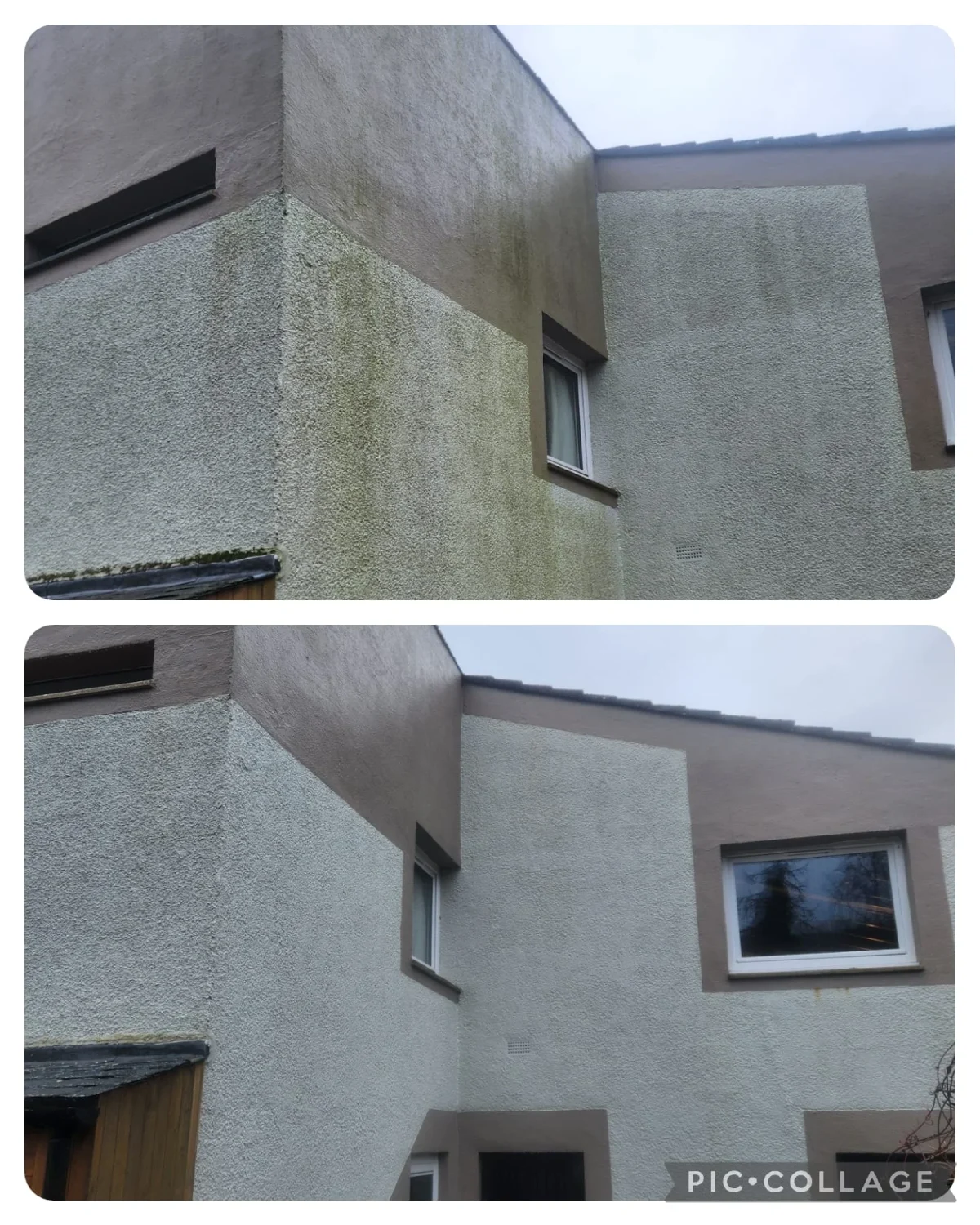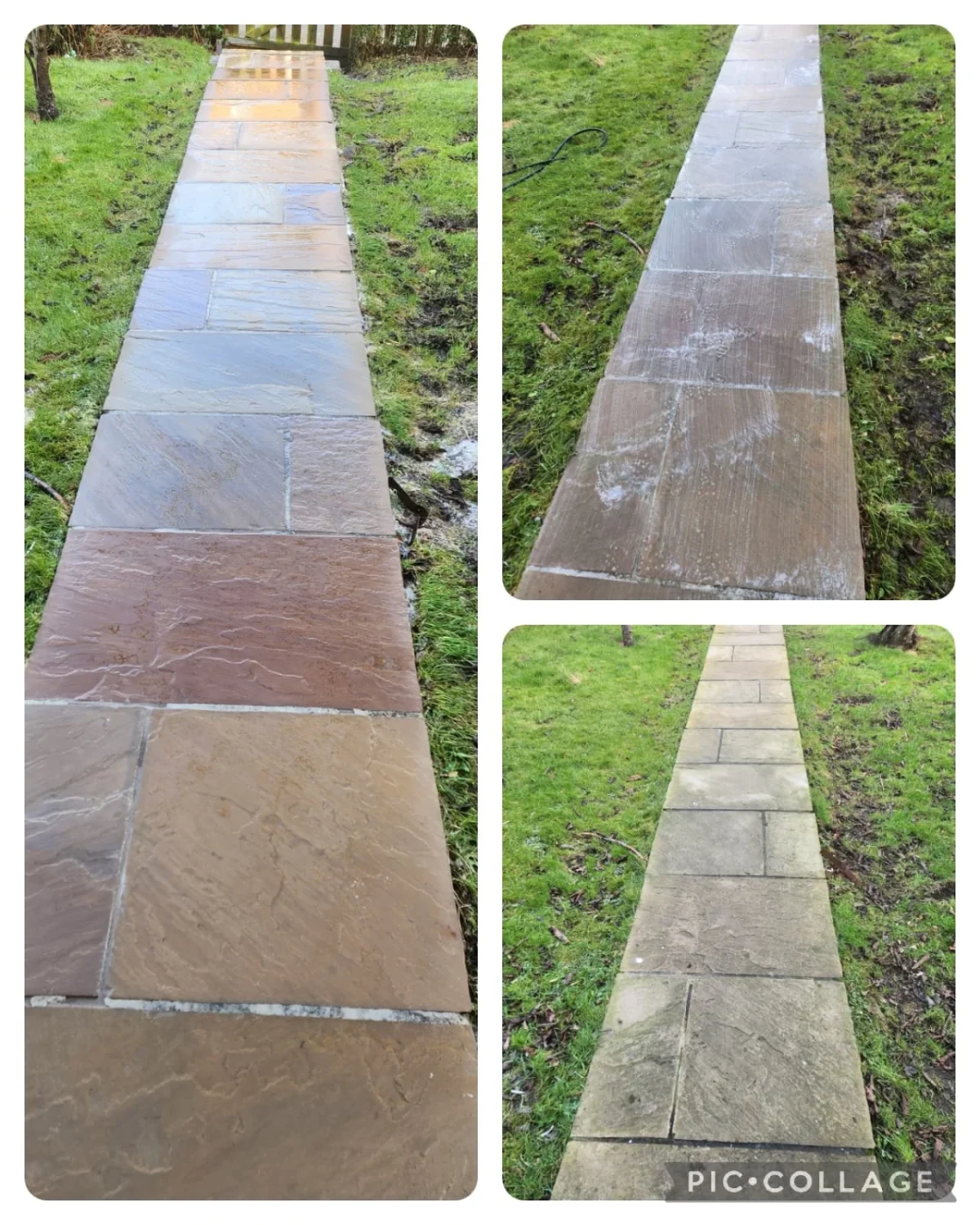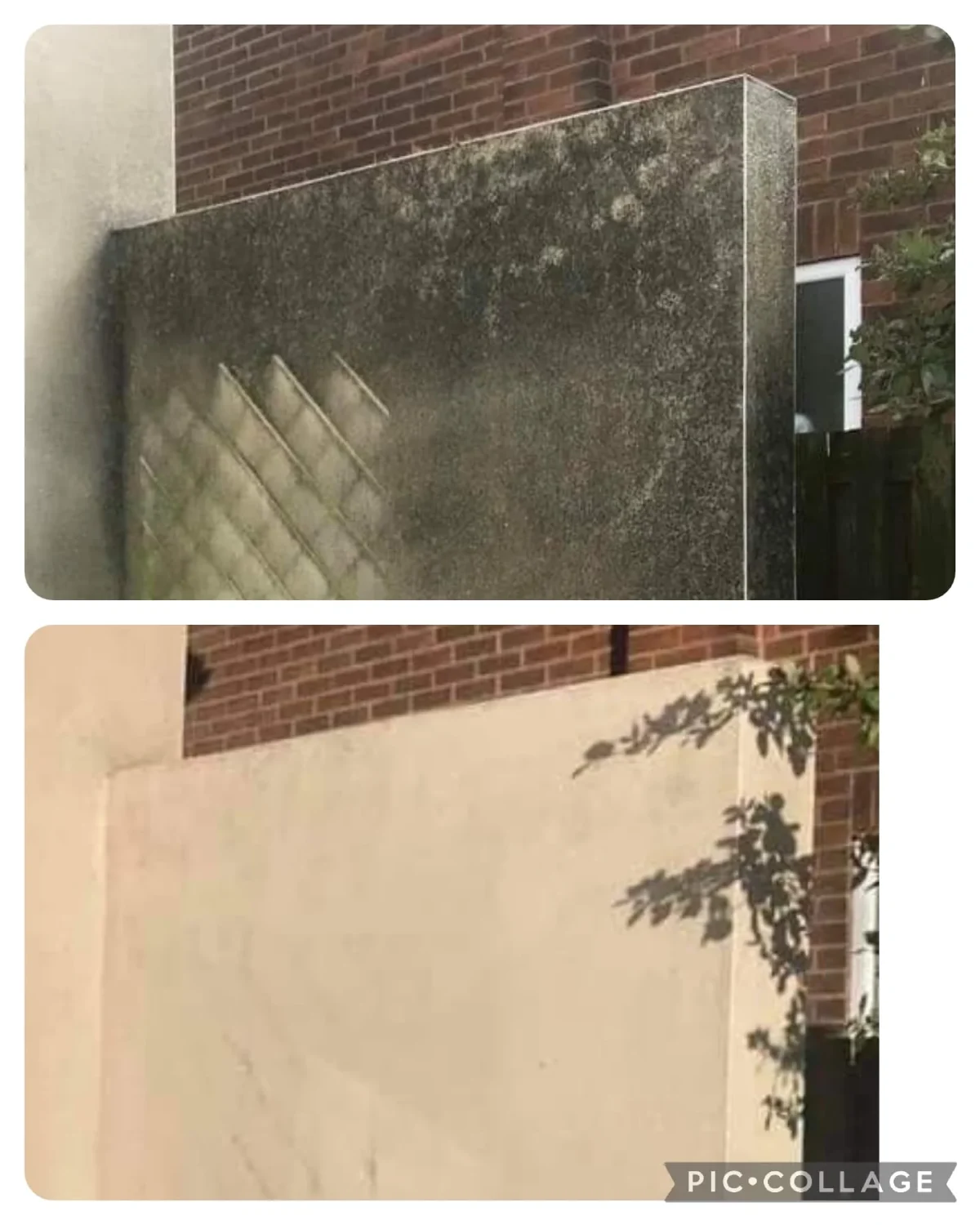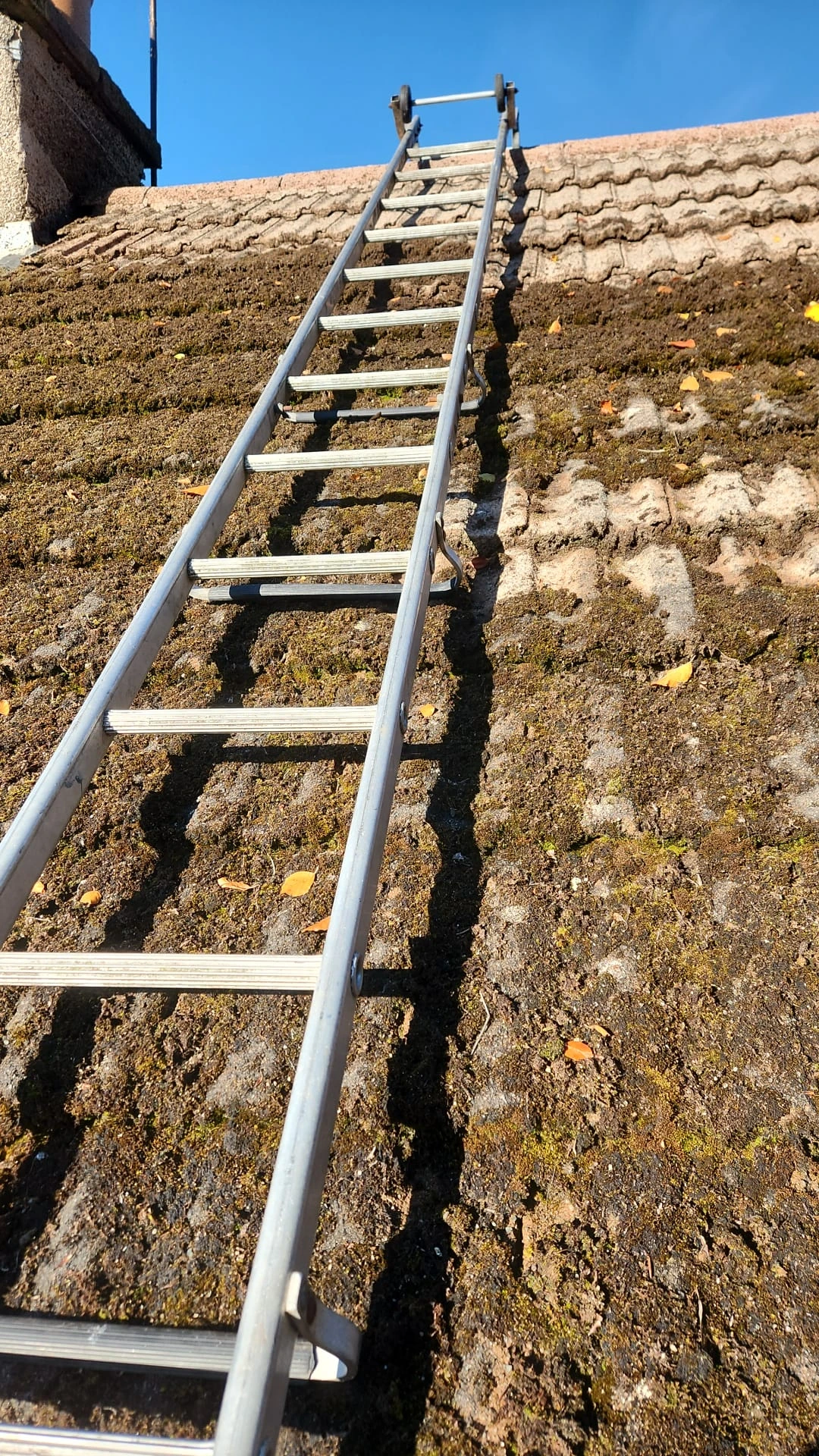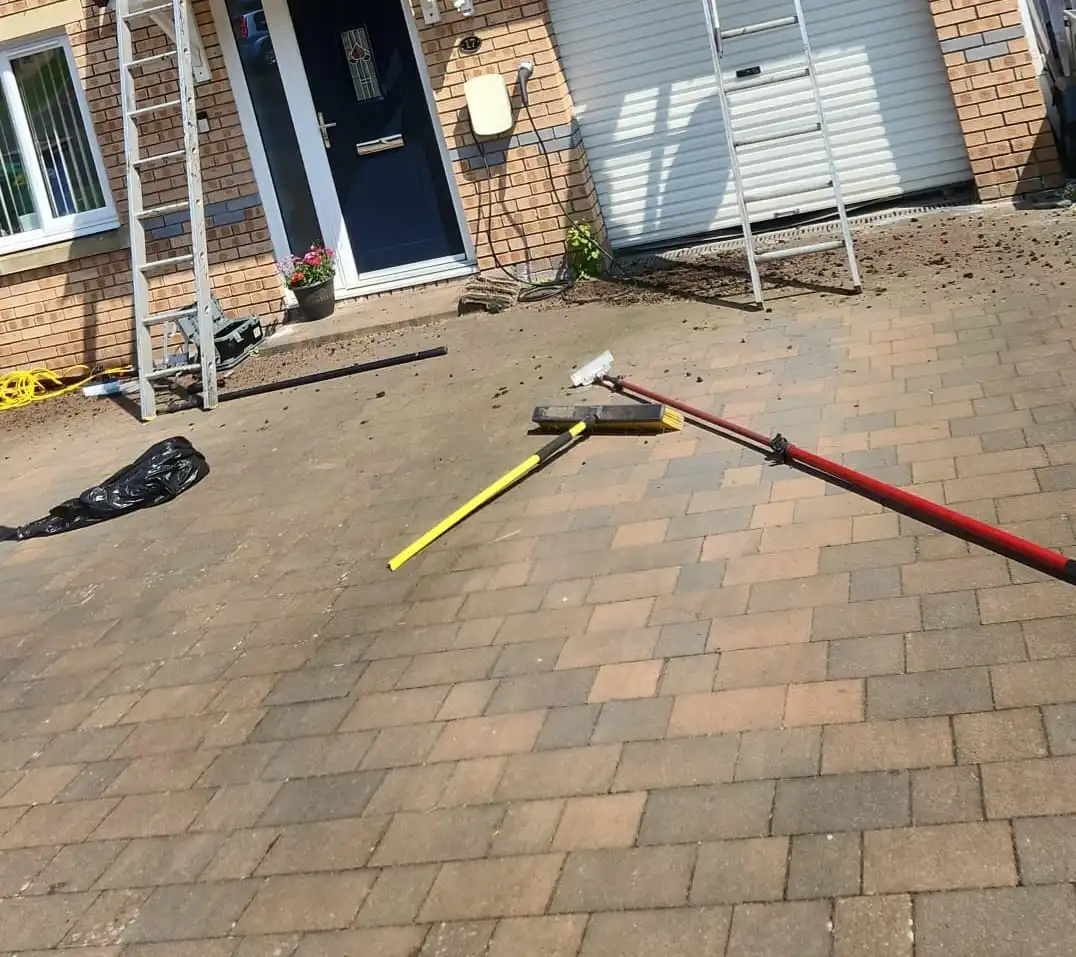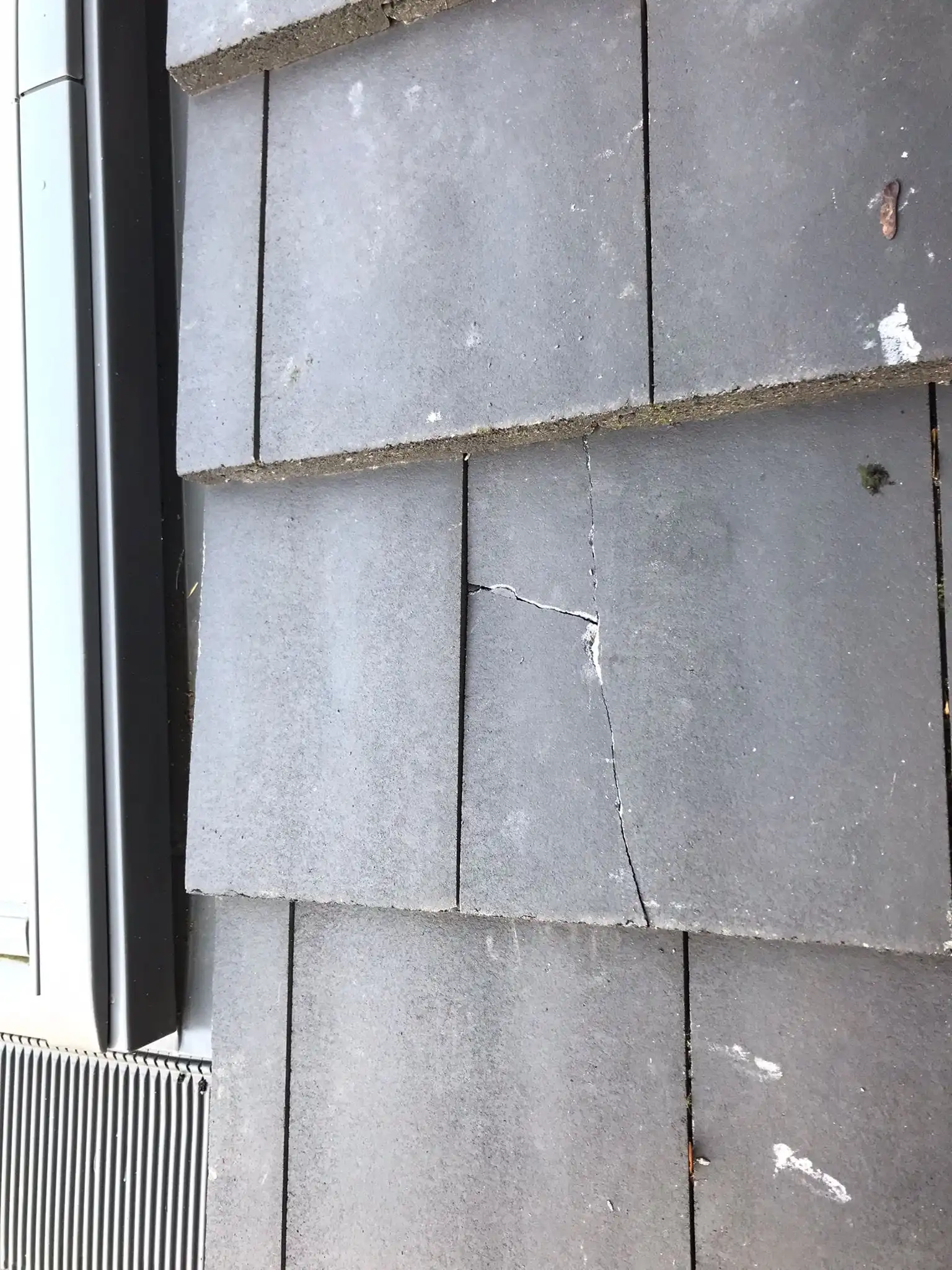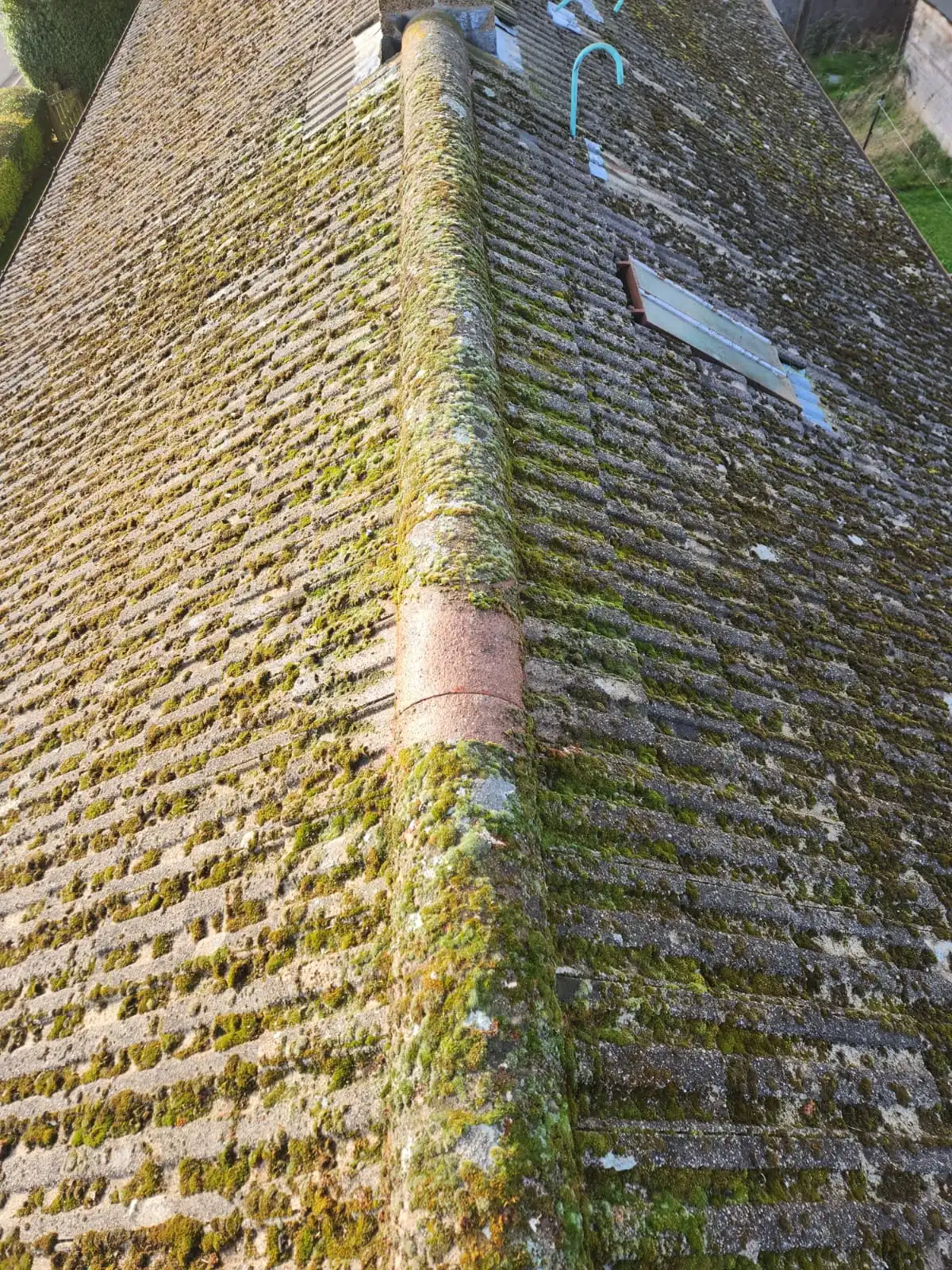What is Render cleaning?
Types of Render Used in the UK
Render is a coating applied to the external walls of buildings to protect against the elements and enhance the aesthetic appeal. It’s a popular choice for new builds and existing properties that are being renovated. In the UK, several types of render are used, each offering unique benefits and requiring specific care. Let’s explore the most common types.
Cement render is one of the most common render finishes in the UK. It’s made from a mix of sand, cement, and water, creating a durable, weather-resistant finish. While it’s affordable and relatively easy to apply, cement render can be prone to cracking over time. According to the UK’s Building Research Establishment (BRE), cement-based renders may experience cracking in response to shrinkage, moisture, or building movement (Source: BRE). Over time, the cracks can allow water to seep in, compromising the render’s integrity and leading to potential mould growth.
- K-Rend (Silicone Render)
K-Rend is a brand of silicone-based render that’s becoming increasingly popular in the UK. It’s well-known for its durability, water resistance, and flexibility. K-Rend is ideal for preventing issues like cracking, which is common in traditional cement-based renders. Moreover, silicone renders like K-Rend are more breathable than other types, allowing moisture to escape. This can help reduce the risk of water damage and mould growth.
A report by the Construction Products Association (CPA) highlights that silicone-based renders are gaining popularity due to their ability to withstand harsher weather conditions compared to more traditional cement-based finishes (Source: CPA). However, K-Rend should never be pressure washed, as high-pressure water can cause the surface to crack or degrade over time.
- Lime Render
Lime render is an older form of render commonly used in restoration projects, especially on historical buildings. It’s made using natural lime, sand, and water and is valued for its breathable properties, which help moisture escape from the building. According to the Institute of Historic Building Conservation (IHBC), lime render is particularly beneficial for buildings constructed before the 20th century, as it allows the structure to “breathe,” which is important for preventing damp (Source: IHBC).
However, lime render is not as durable as cement render, and it is more susceptible to damage from environmental factors such as frost. It requires more frequent maintenance and cleaning to ensure its longevity.
Methods of Cleaning Render
Render cleaning in Edinburgh and the UK in general involves various methods depending on the type of render, the extent of staining, and the environmental factors impacting the surface. It’s crucial to select the appropriate method to avoid damaging the render. Let’s review the most effective cleaning techniques.
- Low-Pressure Cleaning
Low-pressure cleaning is one of the safest methods for cleaning render surfaces. This technique involves applying water at low pressure to remove dirt, grime, and biological growth such as algae and moss. According to the British Cleaning Council (BCC), low-pressure cleaning is particularly suitable for most render types, especially cement-based and acrylic renders. It avoids the risks associated with high-pressure water, which can cause cracks or erosion on the surface (Source: BCC).
- Soft Washing
We offer an Edinburgh soft washing service, and this is a popular method for cleaning more delicate renders such as K-Rend. It uses a combination of low-pressure water and eco-friendly cleaning solutions. When asking, what is Soft washing, the solutions typically contain mild chemicals like sodium hypochlorite or Bac50 biocide, which are effective at removing organic growths and stains without causing damage to the render.
Research from the University of Nottingham found that sodium hypochlorite is particularly effective at eliminating moss, algae, and fungi, which are common issues for rendered surfaces (Source: University of Nottingham). When applied correctly, soft washing not only removes stains but also prevents future growth by treating the root cause of the problem. More on the benefits of soft washing can be found here.
- Chemical Cleaning
In cases of stubborn stains or deep discolouration, chemical cleaning may be necessary. Sodium hypochlorite (bleach) is a commonly used solution to remove algae, moss, and mildew from cement render. Bac50 biocide is another popular solution for more persistent biological growth.
The Royal Society for Public Health (RSPH) recommends using diluted bleach solutions for cleaning exterior surfaces, as they are effective at sanitising and removing stains without causing significant damage (Source: RSPH). However, it’s essential to use these chemicals with caution, as excessive use can lead to surface degradation and discolouration over time.
- Pressure Washing (Avoid on K-Rend)
Pressure washing is commonly used for cleaning concrete surfaces and other hard materials. However, it should be avoided when cleaning more sensitive renders like K-Rend, as high-pressure water can cause cracking and strip away protective layers. The Health and Safety Executive (HSE) warns against using high-pressure washing on materials that may be vulnerable to damage, as this can lead to long-term structural issues (Source: HSE). When Driveway cleaning in Edinburgh, pressure washing is ideal as we are dealing with a hard surface. However, sometimes when offering an Edinburgh patio cleaning service; soft washing is ideal due to the jointing between patio slabs being at risk of high pressure.
Best Practices for Render Cleaning
To achieve the best results and avoid damage, it’s essential to follow certain best practices during the render cleaning process. Below are some key tips for keeping your rendered walls in optimal condition.
- Inspect the Render Before Cleaning
Before beginning any cleaning work, carefully inspect the render for cracks, chips, or other forms of damage. Identifying any issues beforehand will help you determine whether the render needs to be repaired before cleaning. According to a study by the Royal Institute of British Architects (RIBA), regular inspections can help prevent further damage and ensure that any issues are addressed promptly (Source: RIBA).
- Choose the Right Cleaning Solution
Using the right cleaning solution is essential for avoiding damage to your render. For cement-based renders, sodium hypochlorite or Bac50 can effectively remove biological growths and deep stains. For more delicate finishes like K-Rend, a soft wash solution with a mild biocide should be used. According to a report from the Construction Products Association, selecting eco-friendly and biodegradable cleaning agents is also an important consideration, as they help protect the environment and surrounding vegetation (Source: CPA).
- Protect Surrounding Areas
Before cleaning, ensure that surrounding areas such as plants, windows, and paths are protected from overspray or runoff. Use plastic sheeting or tarps to cover plants and tape off windows to prevent damage from cleaning solutions. This extra step can save you time and money by avoiding costly damage or clean-up.
- Wear Protective Gear
Always wear protective gear when working with cleaning solutions or pressure washing equipment. This includes gloves, goggles, and a face mask to protect yourself from exposure to chemicals. Additionally, wearing slip-resistant footwear can prevent accidents on wet surfaces.
- Establish a Regular Cleaning Schedule
Regular render cleaning is essential for maintaining the appearance and condition of the render. Ideally, aim to clean your render at least once a year. However, if you live in a polluted area or experience harsh weather conditions, more frequent cleaning may be necessary. A study by the University of Oxford found that cleaning render at regular intervals can help prevent the buildup of dirt and stains, ensuring that it stays in top condition for longer (Source: University of Oxford).

